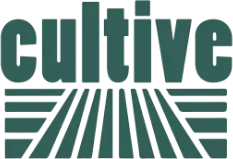A sustainable
viable and sustainable
designed to be virtuous and rapidly duplicable.
A proven method
Inspired by agroecology and bio-intensive techniques - practiced by 19th-century Parisian market gardeners and developed for over 20 years by our godfather Jean-Martin Fortier - the Cultive method offers triple performance:
Economically profitable
By diversifying revenue sources and optimizing payroll costs
- approximately 60 tonnes/hectare/year
- up to €250,000 sales / year
- optimized working time
Ecologically beneficial
Preserving biodiversity and combating global warming
- soil regeneration
- carbon sequestration
- water-saving management
Socially just
Improving the quality of life of new farmers
- 35 hours spread over the year
- healthy + accessible food
- stronger links between cities and rural belts
A duplicable method
With nearly 200 farms disappearing every week in France, the challenge of rapidly deploying new infrastructures is key to our food resilience. That's why we've designed Cultive farms to be rapidly duplicable, with optimized investments and a virtuous agronomic system supported by an ecosystem of partners.

Characteristics of a Cultive farm
- Area between 1 and 5 hectares
- Between 3 and 7 FTEs depending on the maturity of the farms
- Agroforestry model for market gardening, arboriculture and small-scale livestock farming
- Main activity: bio-intensive market gardening
- Complementary activities according to the season's highlights: arboriculture, small fruits, aromatic and medicinal plants, small livestock, beekeeping, processing...
An applied method
The Cultive pilot farm
Designed to be productive, educational and experimental, the Cultive campus farm will eventually house 4 farm modules of 5ha each, where learners will be able to apply the method taught but also experiment and challenge practices.
Partner and customer farms
A method that can also be adapted to the specific needs and conditions of each farm project.

Voyageurs du Monde Farm
- Kom Ombo, Egypt




